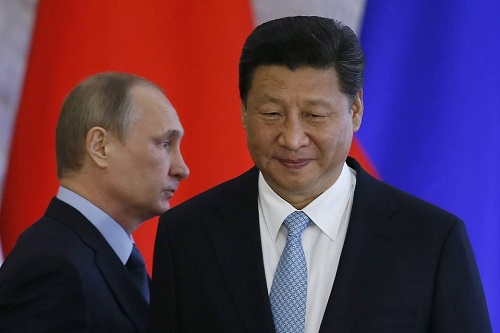EPA photo
By
Tom Arms
The Earth is constantly changing. There are something like 15 plates which comprise the Earth’s crust or mantle and they are forever moving towards and away from each other. Geologists call the movements tectonic shifts, and sometimes they cause massive earthquakes or volcanic eruptions.
The geological shifts are mirrored in politics. Presidents, prime ministers, governments and countries move to the right and the left. They change alliances and sometimes disappear altogether.
Earthquakes are difficult to predict. The same can be said of tectonic political shifts. In one case we are dealing with nature with all its unknown variables. In the other we are dealing with equally unpredictable human nature.
The political world at the moment is going through one of its shifts. It is a shift which involves the rise of new powers, ideas, concepts, and resources and the decline of their older counterparts in different parts of the world. Just as with an earthquake, or volcanic eruption, these are likely to be disruptive at best and wreak death and destruction at worst.
Fifty years ago the world was locked in a Cold War between two powers—the United States and the Soviet Union—representing two separate and distinct political ideologies. Most of the rest of the world either voluntarily or involuntarily sided with one power or another.
The primary fighting ground in this conflict was Europe. The conflict rose from the ashes of primarily a European war, the Soviet Union was a European power and America’s major markets, historic and cultural links were with Europe.
Asia was important but peripheral because China—the world’s most important Asian power—had withdrawn into its shell to indulge in one of its periodic bouts of self-inflicted political blood-letting.
So the focus of the United States was on Europe. Even when the simmering conflict boiled over in Asian hotspots such as Korea and Vietnam, the statesmen were more concerned about the effect weakness this would have on Soviet and American actions on the other side of the world.
Now the plates—at least some of them—are moving again. For a start China has emerged from its shell ready and extremely willing and able to take up its role of regional leader and world power. It is the world’s largest population, second largest economy, the world’s largest army and the fourth largest nuclear arsenal.
The Asian plate is expanding and—in many American eyes– is replacing Russia as the biggest tectonic threat. But the problem is that for the Europeans–whose EU plate has also been growing in economic terms but not nearly enough in political or military terms—is still worried about Russia.
Moscow has never fully accepted that it lost the Cold War. It has simply changed tack and substituted Marxism with ultra-nationalism. Its self-perceived role as the dominant power of Eastern Europe is as overpowering now as it was in the 17th, 18th, 19th and 20th centuries. Hegemony is part and parcel of its national image.
The Obama Administration recognised these shifts and launched its “Asia Pivot” to shift diplomatic and trade resources to the Eastern edge of the Pacific. The Trans Pacific Partnership—which excluded China—was a key part of this pivot. The Trump Administration abandoned TPP but not its fear of China. It believes that a conflict is coming. The conflict will be with China and its best to have it as soon as possible while the United States is still top dog.
The problem is that Europe remains under threat from Russia. A corruption-riddled political and economic structure keeps the economy weak, but Russia still has the world’s largest nuclear arsenals and President Putin has discovered that foreign adventures win him support back home.
On top of that, Russia and China have rediscovered a community of interests. They were allies and then opponents during the Cold War. Now they are allied again in the cause of authoritarianism versus Western liberal democracy.
The United States is now effectively faced with a two front conflict while its economic dominance is declining. Tricky. Ideally the answer would be to concentrate on one front. But which one and how?
Tom Arms is the editor of LookAheadnews.com. Sign up now for the weekly diary of world news events.
LookAhead Radio World Report for week commencing 8 January 2018:
Tom Arms
I am a journalist, entrepreneur and historian with extensive experience in print, web and broadcast journalism. I started as a diplomatic correspondent, wrote several books (The Falklands Crisis, World Elections On File and the Encyclopedia of the Cold War), and then in 1987 started my own business (Future Events News Service, www.fensinformation.com) which over 25 years established itself as the world and UK media’s diary. Our strapline was: “We set the world’s news agenda.” I sold FENS in December 2012 but retained the exclusive broadcast rights to all of FENS data. To exploit these rights I set up LookAhead TV which produces unique programmes which “Broadcasts Tomorrow Today” so that viewers can “Plan to Participate.” LookAhead has appeared regularly on Vox Africa, Radio Tatras International, The Conversation and Voice of Africa Radio.
In addition to being a syndicated broadcaster and columnist on global affairs, Tom is also available for speaking engagements and can be contacted on Twitter, Linkedin and email: [email protected].



No Comments Yet!
You can be first to comment this post!